The Tongass boasts 142 reservable cabins spanning across approximately 17 million acres. The National Forest Foundation received funds from Rasmuson Foundation and the U.S. Forest Service to support the renovation of ten Tongass cabins between 2019 and 2021. It’s an investment in spaces that uplift the wellbeing, culture, and economy of Southeast Alaska.
Spring in Southeast Alaska means longer days, providing ample time to begin fieldwork and necessary restoration and renovation projects. Like years before, the Sitka Conservation Society (SCS) and its specialized remote wilderness construction crew, along with many other partners and volunteers, coordinated with the U.S. Forest Service to restore the Kanga Bay cabin on the Sitka Ranger District. This cabin is located south of Sitka, Alaska on the Tongass National Forest and is surrounded by spectacular views of an idyllic salt-water bay, forested ridges, and the glacially carved, snow-capped mountains surrounding Redoubt Lake.
The Kanga Bay cabin, originally built in 1998, has been exposed to harsh winters, fall storms, salt water-infused fog, and the occasional sunny day, leading to deterioration of the deck and siding.
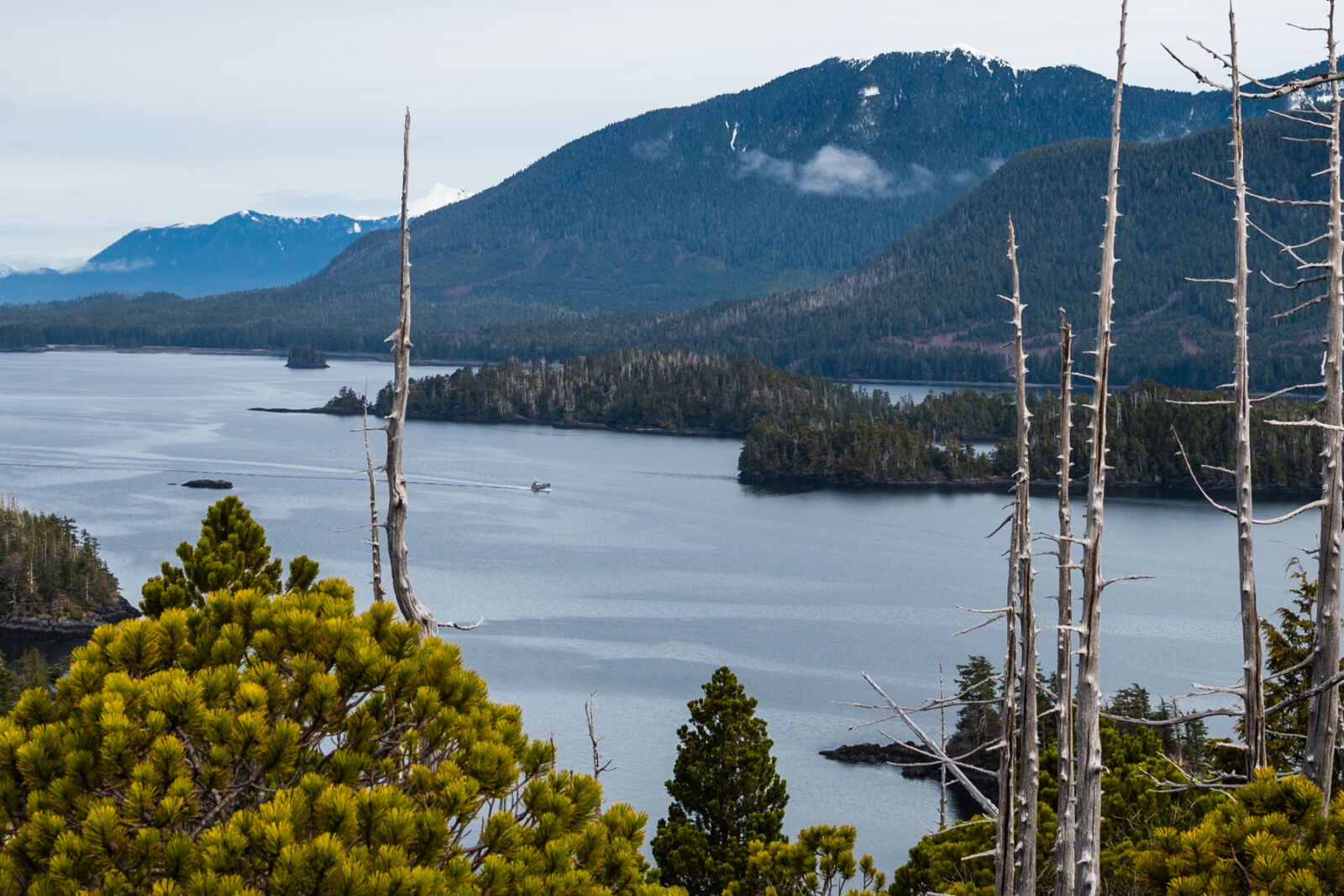
Photo by Lione Clare
Seeker Comes Into Kanga Bay Carrying Materials For Cabin Renovations
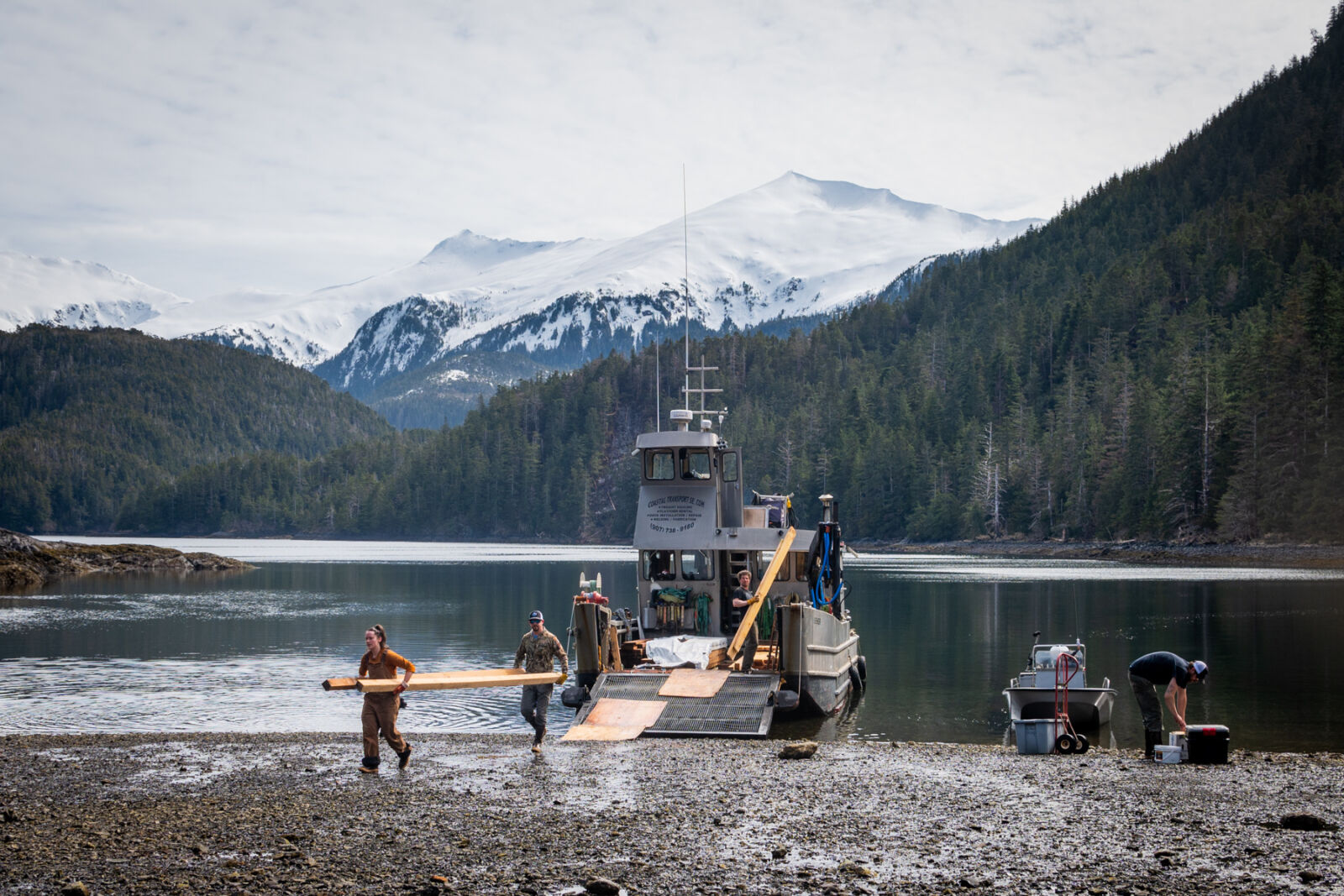
Photo by Lione Clare
Partners Offload Lumber For Renovations At Kanga Bay Cabin
Repeated use and exposure to these elements also had worn down the cabin’s woodstove and woodshed, which are both critical in the cold and rainy climate common on the Tongass.
Tristan Rhodes and Olan Moore, Sitka Conservation Society’s specialized remote wilderness construction crew, mobilized in mid-April with their tools and supplies to begin the Kanga Bay cabin renovations. The deck, wood stove, and woodshed were all replaced, ensuring future users will have a safe deck to enjoy, efficient heat source for the cabin, and a robust supply of seasoned firewood ready to provide year-round warmth. The new woodshed was constructed with Alaska yellow cedar, Sitka spruce, and western hemlock lumber milled locally in Sitka by Clayton Stromquist from salvaged dead trees or from urban removal trees.
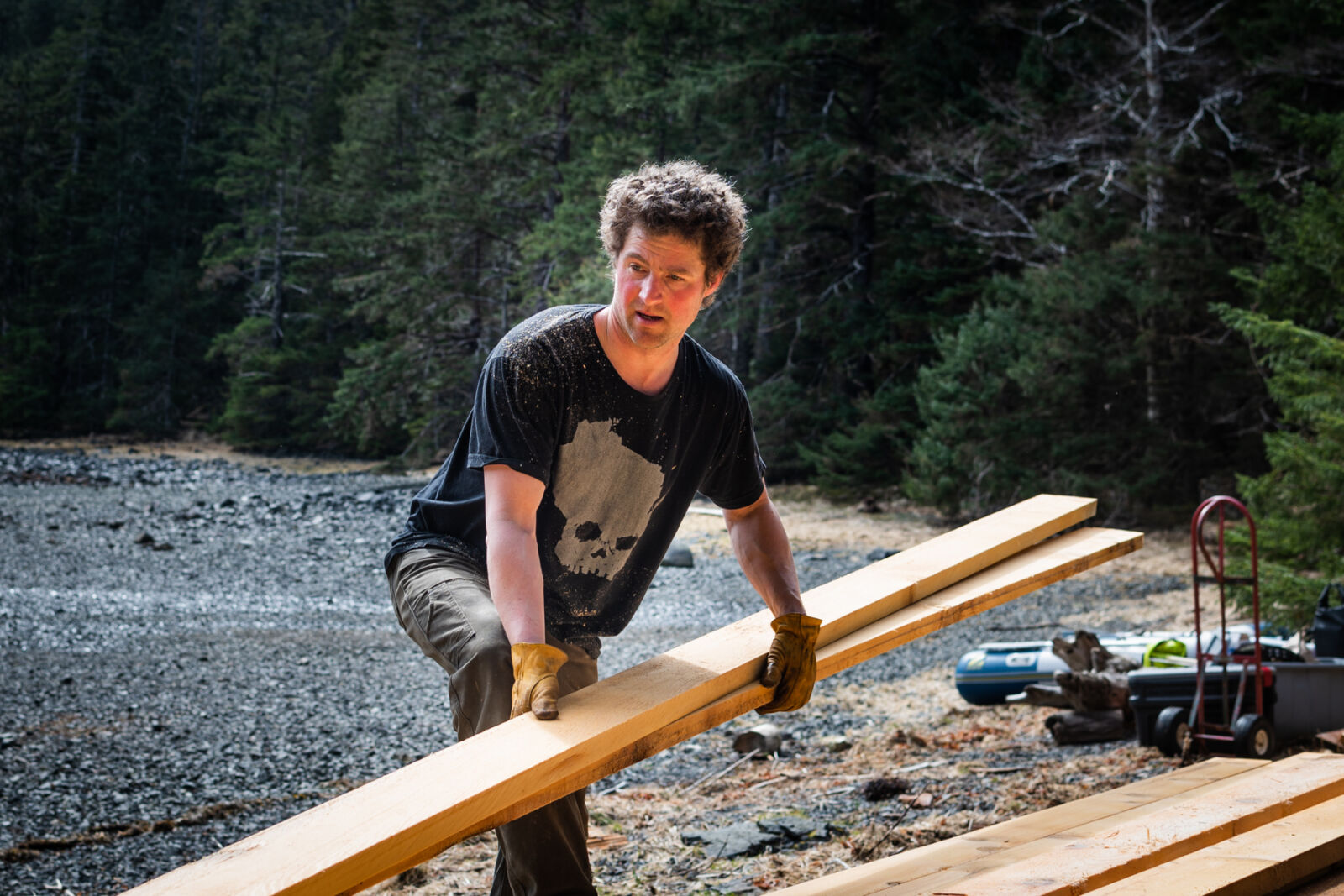
Photo by Lione Clare
Seeker Captain Billy Akan Stacks Lumber At Kanga Bay Cabin
This was a really fun project and I don’t know how we lucked out on the weather, but it couldn’t have been better. We like working together and are always looking forward to future renovation projects.
U.S. Forest Service public use cabins are part of a large network of recreational facilities on national forest lands, including campsites, trails, and cabins. Across the Tongass and throughout the country, the public can use these facilities to experience our public lands that we cherish and rely on for hiking, fishing, harvesting wild foods, watching wildlife, and more. They also remind visitors of the importance of preserving intact natural landscapes and ecosystems, like the old-growth temperate rainforests surrounding Kanga Bay.
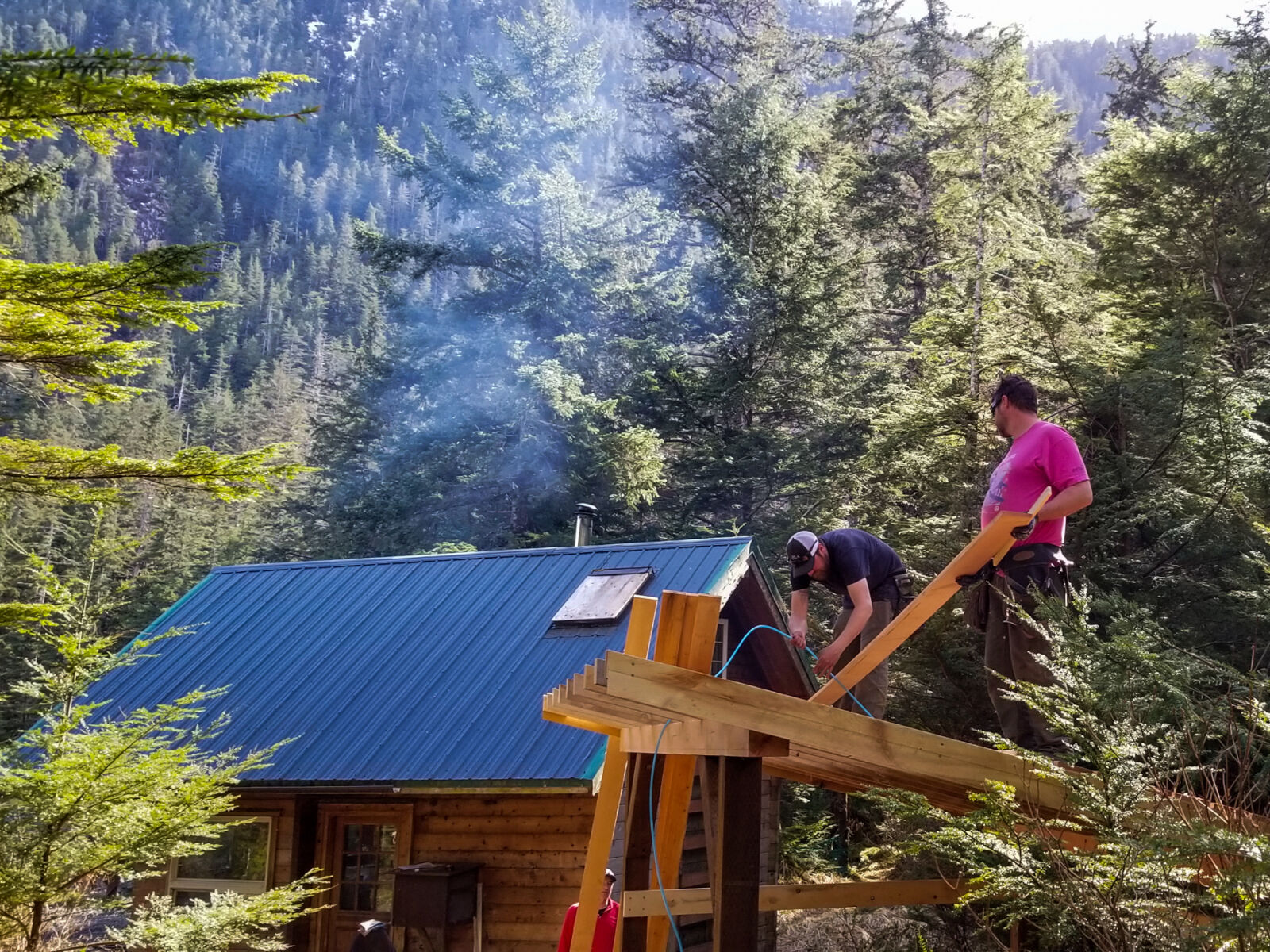
Photo by Andrew Thomas
Olan Moore And Tristan Rhodes Work On New Woodshed
“Restoring public use cabins in places where we have organized projects, like Deep Bay, Allan Point, Fred’s Creek, and Kanga Bay, ensures future generations will be able to enjoy the outdoors and engage in sustainable food practices on the Tongass, whether that’s hiking a mountain or harvesting the wild sockeye salmon that return to Redoubt Lake near Kanga Bay each summer,” says Sitka Conservation Society Executive Director Andrew Thoms.
Due to the remote locations of most cabins, renovation projects on the Tongass often require collaboration between multiple entities and much logistical planning. This project was made possible through partnerships with the U.S. Forest Service, and volunteers from the Sitka Sound Science Center, Spruce Root Inc., JVC Northwest, Alaska Fellows Program, Alaska Conservation Foundation, University of Alaska Southeast, Fish Baranof, Classic Casting Adventures, and Baranof Expeditions.
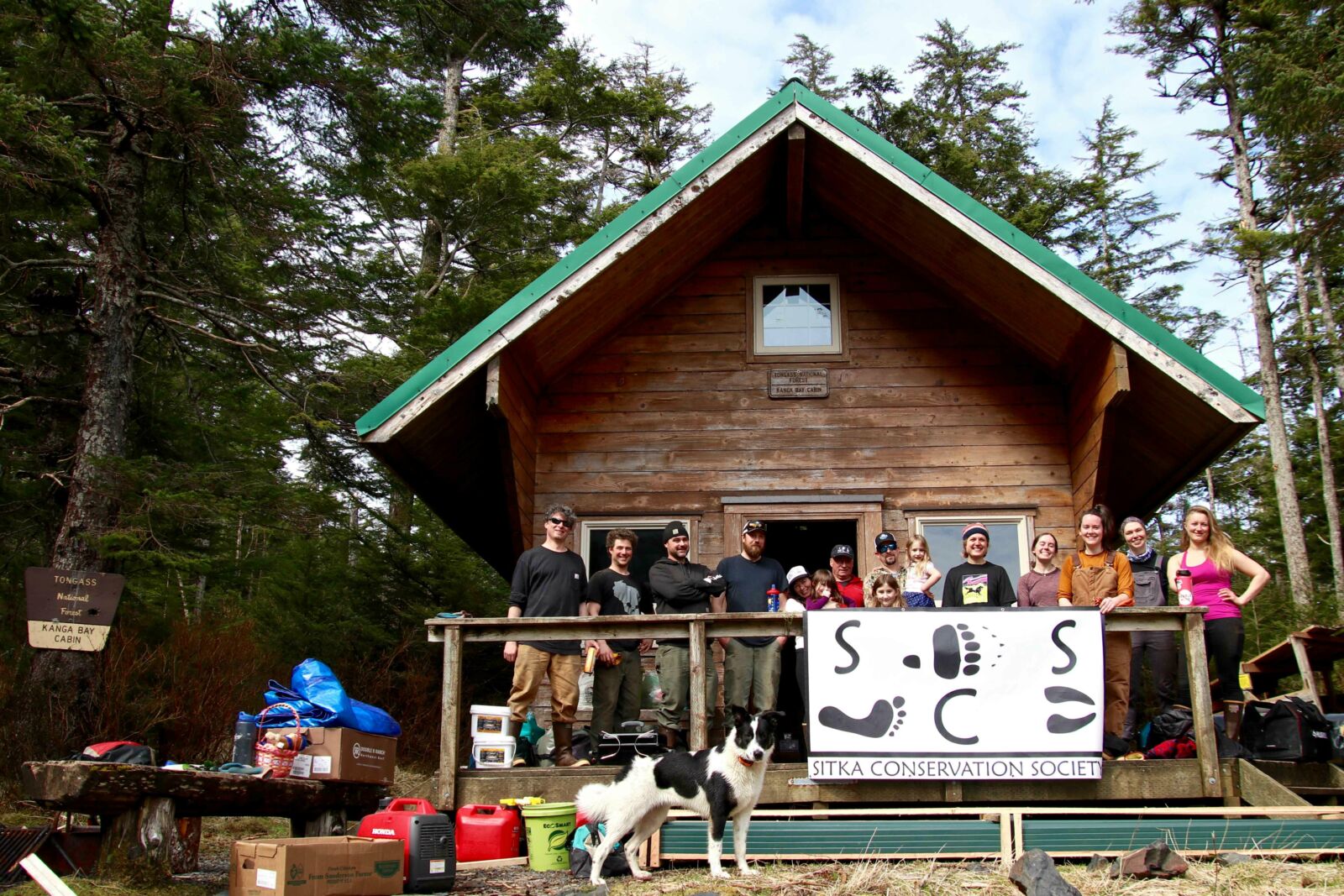
Photo by Amy Li
Group Photo With Some Partners Involved Before Renovations
Construction supplies and support were provided by Spenards Sitka, Johnson Brothers Construction Wrangell, Alaska Marine Lines, the Gary Paxton Industrial Park, Gallant Adventures, TM Construction, Bayside Charters, Simon Alvarado, Maureen O’Hanlon, and Larry Calvin.
Additional thanks to M/V Seeker Captain Billy Akan, who assisted in transporting the crew and supplies to the remote location only accessible by boat or seaplane.
Funding came from the National Forest Foundation through a grant from Rasmuson Foundation, matched by the Alaska Forest Fund, a partnership between the Forest Service Alaska Region and the NFF.

